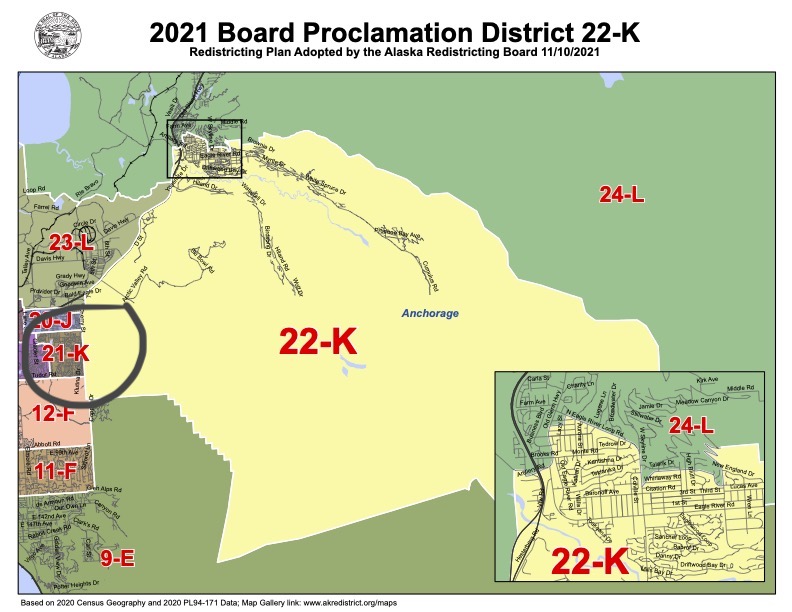Anchorage Superior Court Judge Thomas Matthews says the new political map for Alaska is imperfect, and some of the process for drawing it was also flawed, violating the Alaska Open Meetings Act by going into executive sessions. He said in his late Tuesday night ruling that the Senate map needs to be redone and one House district involving Skagway and Juneau also needs different lines.
His decision will most certainly be appealed to the Alaska Supreme Court. Matthews based much of his reasoning on the misuse of executive sessions by the Alaska Redistricting Board.
Five various lawsuits were brought against the board by interests ranging from the City of Skagway to the Doyon Native corporation and Tanana Chiefs Conference. Most were not mentioned in the judge’s decision, but he focused on the Skagway-Juneau and Eagle River-Muldoon areas.
“This Court finds that the Board’s refusal to consider and make a good-faith effort to incorporate public feedback relating to the placement of Skagway and the dividing line in Juneau was arbitrary and capricious, and thus unreasonable. The same holds true for the East Anchorage senate pairings. if the Board could simply ignore the preponderance of public testimony and make decisions based on a single Member’s personal views, then Section 10 would be rendered superfluous.
“This Court therefore orders a remand of the final plan to the Board with instructions to take a “hard look” at House Districts 3 and 4 and Senate Districts K in light of public testimony. On remand, the Board must either redraw these districts to incorporate the reasonable requests supported by the clear weight of public testimony, or the Board must offer an explanation as to why it believes the constitution, federal law, or other traditional redistricting criteria make it impossible to achieve those results,” Matthews wrote.
Skagway didn’t want to be paired with the Mendenhall Valley and Auke Bay, but wanted to jump over those more contiguous neighbors and be paired with the very liberal downtown Juneau. Others in that area — Haines and Gustavus — didn’t object to being paired with the area where a large majority of Juneau lives, north of Juneau, where the transportation access to their communities is.
Regarding East Anchorage being paired with Eagle River in Senate Seat K, Matthews said “For East Anchorage, the Board obviously violated the ‘hard look’ standard by ignoring public comment on the senate pairings. The Board left itself almost no time for comment devoted to senate pairings. Despite that abbreviated time period, the support for keeping Muldoon and Eagle River separate was loud and clear. And yet the Board ignored it to accommodate the wishes of a single Member, even though it was constitutionally possible to keep those communities together. Having fgailed to take an appropriate “hard look” at the Senate pairings, the Board violated the constitutional rights of East Anchorage Plaintiffs under Article l,& 7 of the Alaska Constitution.”
The inclusion of Muldoon with Eagle River has raised the ire of Democrats in Anchorage.

The redrawing of political boundaries is an exercise that takes place every 10 years after the national census, as a method to even out the populations between districts and ensure equal representation in the Legislature, and in other states, congressional seat boundaries. Members of the Alaska Redistricting Board are politically appointed by the governor, Senate president, House speaker, and Chief Justice of the Alaska Supreme Court. This board’s bios are at this link.
The entire decision can be found at this link.

Alaska can’t do anything right.
I live in East Anchorage. This is great news.
The most casual observer would agree with the Superior Court decision as the Eagle River Senate pairings were obviously flawed and Skagway is debatable. Public testimony supports the Superior Courts decision. No reason to believe the AK Supreme Court will differ.